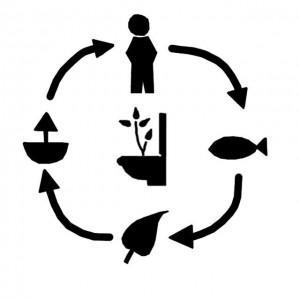Sanitation is defined as “a multi-step process in which human excreta and wastewater are managed from the point of generation to the point of use or ultimate disposal” (TILLEY ET AL 2014). Access to adequate sanitation is fundamental to assure a life with dignity for refugees and Internally Displaced People (IDPs) residing in Urban Settings.
When possible, urban refugees and IDPs should be served with the sanitation services already in operation. However, challenges may arise when the level of access to services is unequal between the local population and the new arrivals, which also may lead to competition and tension between them.
The humanitarian actors working in the sanitation sector follow the The Sphere Project Standards /sanitation-systems/sanitation-technologies/Minimum Standards for implementing sanitation interventions to reduce health risks in urban settings. These standards are:
- SPHERE, Water, Sanitation, and Hygiene (WASH) Standard 1: WASH Programme design and Implementation. WASH needs of the affected population are met and users are involved in the design, management and maintenance of the facilities where appropriate.
- SPHERE, Excreta Disposal Standard 1: Environment free from human faeces. The living environment in general and specifically the habitat, food production areas, public centres and surroundings of drinking water sources are free from human faecal contamination.
- SPHERE, Excreta Disposal Standard 2: Appropriate and adequate toilet facilities. People have adequate, appropriate and acceptable toilet facilities, sufficiently close to their dwellings, to allow rapid, safe and secure access at all times, day and night.
- SPHERE, Drainage Standard 1: Drainage work. People have an environment in which health risks and other risks posed by water erosion and standing water, including storm water, floodwater, domestic wastewater and wastewater from medical facilities, are minimised.
Where local and national water and sanitation services are available and adequate, the humanitarian actors should encourage local authorities to grant refugees or IDPs access to them. If not, they should work together with local authorities to upgrade the existing ones or to create new structures for the benefit of both the displaced communities and the urban host communities. Generally, implementing costly new infrastructure should be avoided whenever possible. Rather, it is recommended to focus on reinforcing the existing urban infrastructure. As such, it is useful to regard the humanitarian efforts as a mix of emergency relief and development intervention.
The section below presents a selection of sanitation systems and technologies appropriate for Urban Settings. Although the selection was performed by a team of experts, practitioners should always consider the local environmental, technical, financial, social and economic framework conditions when selecting technologies. For the full range of available sanitation systems and technologies, please consult the Compendium of Sanitation Systems and Technologies.
Compendium of Sanitation Systems and Technologies. 2nd Revised Edition
This compendium gives a systematic overview on different sanitation systems and technologies and describes a wide range of available low-cost sanitation technologies.
TILLEY, E. ULRICH, L. LUETHI, C. REYMOND, P. ZURBRUEGG, C. (2014): Compendium of Sanitation Systems and Technologies. 2nd Revised Edition. Duebendorf, Switzerland: Swiss Federal Institute of Aquatic Science and Technology (Eawag) URL [Accessed: 28.07.2014] PDFThe Sphere Handbook
This appendix of SPHERE handbook is a water supply and sanitation initial needs assessment checklist. This list of questions is primarily for use to assess needs, identify indigenous resources and describe local conditions. It does not include questions to determine external resources needed in addition to those immediately and locally available.
THE SPHERE PROJECT (2011): The Sphere Handbook. Rugby: Practical Action Publishing URL [Accessed: 19.10.2016]Compendium of Sanitation Systems and Technologies (Arabic)
This is the Arabic version of the Compendium of Sanitation Systems and Technologies. The Compendium gives a systematic overview on different sanitation systems and technologies and describes a wide range of available low-cost sanitation technologies.
TILLEY, E. ULRICH, L. LUETHI, C. REYMOND, P. SCHERTENLEIB, R. ZURBRUEGG, C. (2014): Compendium of Sanitation Systems and Technologies (Arabic). 2nd Revised Edition. Duebendorf, Switzerland: Swiss Federal Institute of Aquatic Science and Technology (Eawag) PDFWASH in Urban Areas
WASH in Camps
Emergency Handbook
The UNHCR Emergency Handbook is the 4th edition of UNHCR’s Handbook for Emergencies, first published in 1982. This digital edition is primarily a tool for UNHCR emergency operations and its workforce. It contains entries structured along seven main topic areas: Getting Ready, Protecting and Empowering, Delivering the Response, Leading and Coordinating, Staff Well-Being, Security and Media.
UNHCR (2015): Emergency Handbook. Geneva: United Nations High Commission for Refugees URL [Accessed: 16.08.2016]

